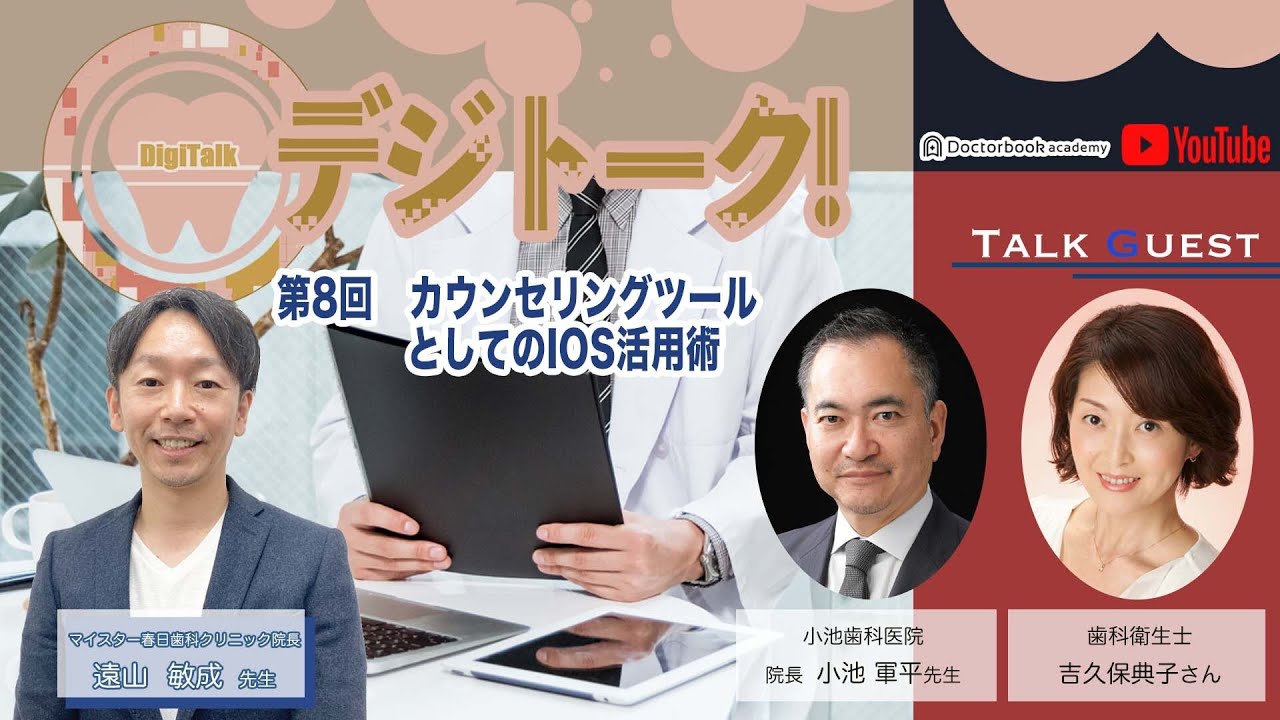Treating a Blind Patient in the Dental Setting
Summary
TLDRIn this informative interaction, dental hygienist Stephanie welcomes Mrs. Wilson to the BCC dental hygiene clinic and offers a tour to ease her anxiety. Mrs. Wilson expresses challenges with oral hygiene due to visual impairment, prompting Stephanie to conduct a collaborative assessment. They discuss various adaptive tools, including music-playing toothbrushes and Braille pamphlets, to enhance brushing and flossing techniques. Stephanie emphasizes a supportive approach to improving Mrs. Wilson's oral health, planning regular follow-up appointments to monitor progress and ensure optimal care.
Takeaways
- 😀 The dental hygienist, Stephanie, introduces herself to Mrs. Wilson and establishes a welcoming atmosphere.
- 🏥 A tour of the BCC dental hygiene clinic is suggested to help Mrs. Wilson feel more comfortable.
- 🦷 Stephanie explains the various instruments used during the dental assessment, including the dental mirror and explorer.
- 👁️ Mrs. Wilson shares her difficulty in managing oral hygiene due to being visually impaired.
- 🤝 A collaborative approach to oral health management is emphasized, allowing Mrs. Wilson to actively participate in her care.
- 🎶 Stephanie presents adaptive tools like music-playing toothbrushes that help guide brushing for visually impaired patients.
- 📜 Braille pamphlets for brushing and flossing techniques are offered to assist Mrs. Wilson in her oral hygiene routine.
- 💦 Water flossers and floss holders are introduced as options to improve Mrs. Wilson's flossing technique.
- 📅 Regular follow-up appointments are recommended every three to four months to monitor progress and optimize dental health.
- 😊 The interaction highlights the importance of personalized care and adaptive strategies in dental settings for patients with special needs.
Q & A
What is the purpose of the initial interaction between the dental hygienist and the patient?
-The initial interaction aims to establish a comfortable environment for the patient, Mrs. Wilson, and to assess her specific needs related to her oral hygiene due to her visual impairment.
How does the dental hygienist plan to make the patient feel more comfortable during the visit?
-The dental hygienist, Stephanie, plans to give Mrs. Wilson a tour of the clinic, which includes explaining the equipment and what to expect during the assessment.
What specific challenges does Mrs. Wilson face regarding her oral hygiene?
-Mrs. Wilson faces difficulties managing her oral hygiene due to her visual impairment, making it challenging to keep her mouth clean.
What instruments does Stephanie introduce to Mrs. Wilson before starting the assessment?
-Stephanie introduces a dental mirror, explorer, and probe, explaining their functions and reassuring Mrs. Wilson about their use.
What indication does Stephanie find during Mrs. Wilson's assessment?
-Stephanie finds indications that Mrs. Wilson may be at risk for periodontal disease and identifies areas needing improvement in her oral health.
What collaborative approach does Stephanie suggest for improving Mrs. Wilson's oral health?
-Stephanie suggests a collaborative approach where they can discuss and build a treatment plan together, focusing on Mrs. Wilson's preferences and needs.
What options does Stephanie provide for improving brushing techniques?
-Stephanie offers toothbrushes that play music to guide brushing and Braille pamphlets with instructions, noting that Mrs. Wilson prefers the Braille pamphlet.
What solutions does Stephanie provide for flossing difficulties?
-Stephanie suggests water flossers for irrigation and floss holders that make it easier for Mrs. Wilson to floss effectively between her teeth.
What is the follow-up plan discussed between Stephanie and Mrs. Wilson?
-They agree on regular follow-up appointments every three to four months to assess Mrs. Wilson's progress and ensure optimal oral health.
How does the interaction contribute to building trust between the patient and the hygienist?
-The interaction focuses on clear communication, collaboration, and reassurance, helping to build trust and comfort for Mrs. Wilson as a patient.
Outlines

This section is available to paid users only. Please upgrade to access this part.
Upgrade NowMindmap

This section is available to paid users only. Please upgrade to access this part.
Upgrade NowKeywords

This section is available to paid users only. Please upgrade to access this part.
Upgrade NowHighlights

This section is available to paid users only. Please upgrade to access this part.
Upgrade NowTranscripts

This section is available to paid users only. Please upgrade to access this part.
Upgrade NowBrowse More Related Video

【LIVEダイジェスト】デジトーク!第8回 カウンセリングツールとしてのIOS活用術with小池軍平先生・DH吉久保典子さん

Interviewing for a Job – Everyday English Dialogues

Should You Brush Your Teeth BEFORE or AFTER Breakfast?

"Al-Quran and Math" With Miss Merisya, S.Si., S.Pd Part 1

Misleading Graphs Real Life Examples

🔥🚀5 REFERÊNCIAS PARA QUALQUER TEMA DE REDAÇÃO DO ENEM! (Débora Aladim)
5.0 / 5 (0 votes)